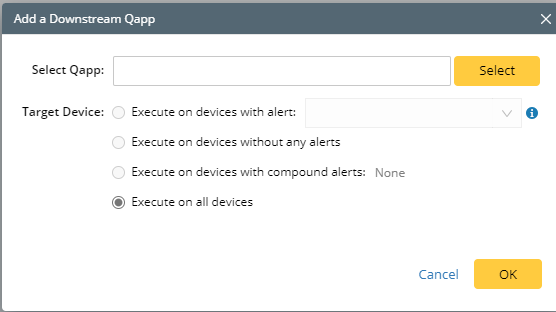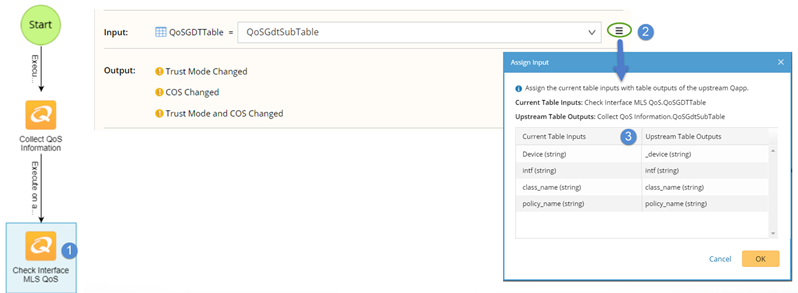2023-Nov-03-R11.1a
Elements of a Gapp
Each Gapp is composed of two or more Qapps and more attributes about a Qapp, including:
- Device Input
- Table Input

Note: Table Input is required when a predefined global table is used as the device input of a Qapp. - Output — output defined in each Qapp.
Device Input
Specify target devices for each Qapp as follows.
| Option | Description |
| Execute on all device | Execute a Qapp on all devices from its upstream node. |
| Execute on devices without alerts | Execute a Qapp on devices that do not trigger alerts in its upstream node. |
| Execute on devices with alerts | Execute a Qapp on devices that trigger a specified alert in its upstream node. You need to specify one alert if multiple alerts are generated in the upstream node. |
| Execute on devices with compound alerts | Execute a Qapp based on a compound condition. Tip: A compound condition contains multiple alerts and supports Boolean expression. |
Assigning Data Input to a Downstream Qapp
Each Qapp inside a Gapp uses global tables to receive the GDT output of its upstream Qapp node. To inherit the data of an upstream Qapp node, you can assign it to a downstream Qapp as input.
- Click the Qapp node that you want to assign data input.
- Click Set Qapp Output Table next to one input table.
- In the Assign Input dialog, select a variable in the output table to bind it with a variable in the input table.
